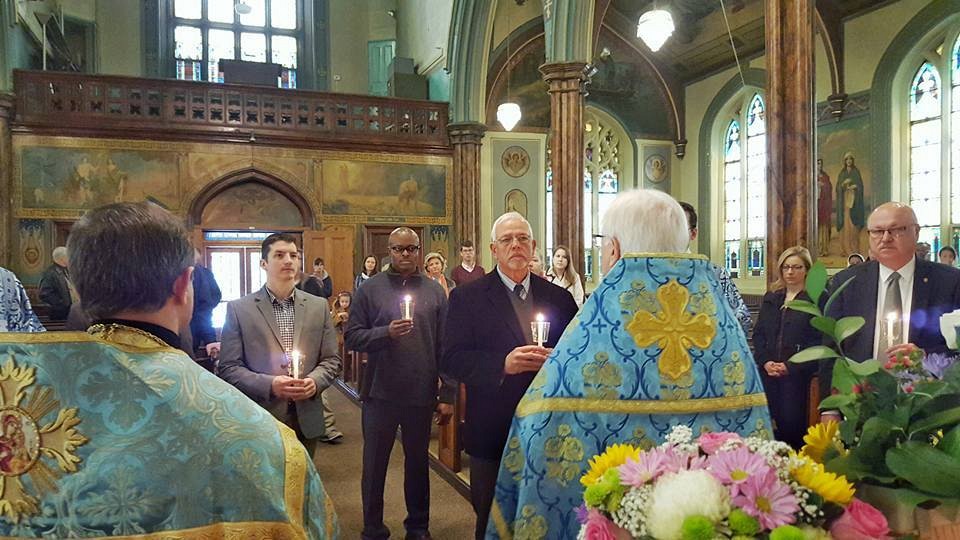The Sacraments of the Church are celebrated as liturgical acts: baptism, chrismation, confession, communion, marriage, ordination and unction.
.
Baptism/Chrismation
The entrance rites into membership in the body of Christ are regularly offered for both adults and infants who have prepared to enter into the Church.
Communion
The Divine Liturgy, at which we partake of the body and blood of Christ, is offered every Sunday and on feast days. Please see our calendar for a full schedule. Communion is for Orthodox Christians who have prepared themselves through fasting, prayer, and the sacrament of confession.
Confession
Confession is offered following evening services and by appointment with Father Joseph.
In St. Nicodemus the Hagiorite, he writes:
"Nothing else remains after confession, Spiritual Father, except to keep the sins you hear a secret, and to never reveal them, either by word, or by letter, or by a bodily gesture, or by any other sign, even if you are in danger of death, for that which the wise Sirach says applies to you: "Have you heard a word? Let it die with you" (Sirach 19:8); meaning, if you heard a secret word, let the word also die along with you, and do not tell it to either a friend of yours or an enemy of yours, for as long as you live.
Marriage
The celebration of a marriage in the church is determined by the Church's liturgical calendar, the parish calendar and other factors. It is necessary to contact the parish priest before the prospective bride and groom choose their date for marriage.
The Service consist of the following:
Office of Betrothal
At the Betrothal service, the chief ceremony is the blessing and exchange of rings. The rings are blessed by the priest in the name of the Father, of the Son, and of the Holy Spirit. The couple then exchange the rings, taking the bride's ring and placing it on the groom's finger and vice-versa. Then they exchange them again, symbolizing that each spouse will constantly be complementing and enriching the other by the union. This is also an outward symbol that the two are joined in marriage of their own free will and consent. It is celebrated in the vestibule of the church building before their procession into the nave of the church.
Office of Crowning
The second part of the service is the ceremony of coronation, in which the heads of the bridegroom and bride are crowned by the priest. In the Russian tradition, the crowns are gold or silver, while the Greek tradition uses crowns of leaves and flowers.
The crowns are crowns of joy, but also crowns of martyrdom, since marriage involves a self-sacrifice on both sides.
At the end of the service the newly married couple drink from the same cup of wine. This common cup is a symbol of the fact that after this they will share a common life with one another. This also recalls the miracle at the marriage feast of Cana in Galilee.
Sat
20Apr5:00 VespersSat
27Apr5:00 VespersSat
4May5:00 VespersSat
11MaySs. Cyril and Methodius
5:00 Vespers

